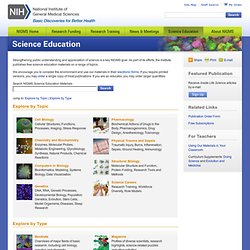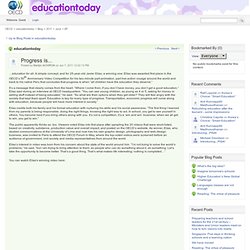

New Yorkers fight to bring back French cheese - France - United States. Since March US customs have held up several pounds of the bright orange mimolette after the Food and Drug Administration said the cheese contained microscopic mites.

The mites are used in the production of mimolette and contribute to its distinctive gray crust. Around 40 people met in New York City’s Greenwich Village on Saturday to protest against the ban but also to educate New Yorker’s on the beloved orange cheese. “We had eight cheese wheels at three kilos each, so we decided to offer them to the public and do a little education at the same time,” Benoît de Vitton, US representative of the Isigny Sainte Mère cooperative, told the AFP news agency. Vitton says the production process of mimolette, including the use of cheese mites, has never changed. Other mimolette lovers got the word out about their favourite cheese by creating a Facebook page, “Save the Mimolette.”
Interactive Learning Sites for Education - Home. Science Education. Strengthening public understanding and appreciation of science is a key NIGMS goal.

As part of its efforts, the Institute publishes free science education materials on a range of topics. We encourage you to consider the environment and use our materials in their electronic forms. If you require printed versions, you may order a single copy of most publications. If you are an educator, you may order larger quantities. Jump to: Explore by Topic | Explore by Type. TED.
Teaching. Inspiration for Science Educators. Enseigner avec et en numérique. Science for the Public. A Framework for K-12 Science Education: Practices, Crosscutting Concepts, and Core Ideas. My virology course at Columbia University. The third annual installment of my virology course at Columbia University, Biology W3310, has begun.

This course, which I taught for the first time in 2009, is intended for advanced undergraduates and will be taught at the Morningside Campus. Until I started this course, no instruction in virology had been offered at the Morningside Heights campus of Columbia University since the late 1980s. This is a serious omission for a first-class University. Sending graduates into the world without even a fundamental understanding of viruses and viral disease is inexcusable. Course enrollment has steadily increased: 45 students in the 2009, 66 students in 2010, and an amazing 88 students this year. Most readers of virology blog will not be able to sit in on each lecture – but you can still watch every one of them. The goal of Virology W3310 is to provide an understanding of how viruses are built, how they replicate and evolve, how they cause disease, and how to prevent infection.
Evolution. Announcing Principles of Biology, an Interactive Textbook by Nature Education. CAUTION: Giant Hogweed might be growing in your own backyard. If you are a parent of a young child, how would you feel if one day your child develops a nasty rash on their skin, scarring, and even blindness after accidentally coming into contact with a dangerous plant while playing outdoors? Well, recently in the news, warnings have gone out on the Northeast, in states such as New York, for a plant commonly known as Giant Hogweed. (Heracleum mantegazzianum) I am sure all of you are familiar with poison ivy and the unpleasant, itchy, rashes it leaves on you skin, but Giant Hogweed, in my opinion, is ten times as worse and severe. Fun Fact: The Giant Hogweed got its scientific name from one of the world's most well known Greek hero, Hercules. Both Hercules and the Giant Hogweed are strong and immense. So, what is Giant Hogweed?
Giant Hogweed originated in Asia. As mentioned in its name, Giant Hogweed is indeed a weed and it has the potential to grow more than 15 feet tall. Health Effects Ecological Effects Giant Hogweed also affects the ecosystem. Video. Education at a Glance 2011: OECD Indicators. Www.oecd.org/edu/eag2011 New material | Data | How to obtain this publication EAG2011 Navigator by country | Additional material | News releases Blogs | Country notes | Presentations | Webcast | Websites | Twitter feed Education Indicators in Focus - No: 5 How is the global talent pool changing?
ISBN: 9789264114203 Publication: 13/9/2011 (click on the image to download the publication) Educationtoday: Progress is... …education for all.

A simple concept; and for 25-year-old Javier Elías, a winning one: Elías was awarded first place in the OECD’s 50th Anniversary Video Competition for his two-minute part-animation, part live-action voyage around the world and back to his native Peru that concludes that progress is when “all children have the education they deserve.” It’s a message that clearly comes from the heart. “Where I come from, if you don’t have money, you don’t get a good education,” Elías said during an interview at OECD headquarters. “You can see young children, as young as 4 or 5, asking for money or selling stuff instead of being educated,” he said. “So what are their options when they get older? Education at a Glance 2011 - Key Results. World Digital Library Home.
Tools. Videos. Courses & lectures. Times&scales.